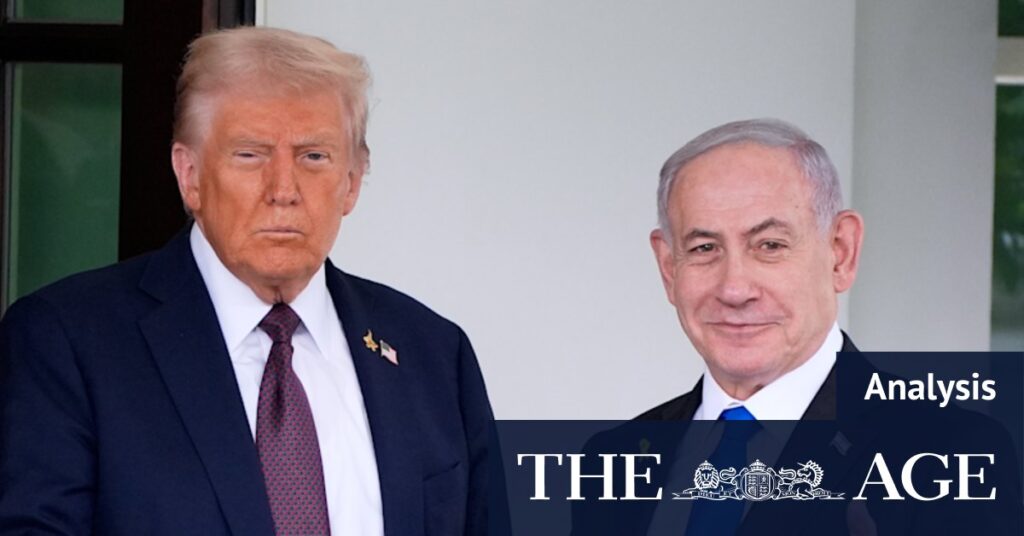
After returning to the White House with bold claims of ending seven wars, Donald Trump is now setting his sights on a monumental goal: achieving peace in the Middle East. His vision extends beyond merely ending the ongoing conflict in Gaza, aiming instead for an “eternal” settlement to the hostilities between Israel and its neighbors.
Trump’s ambitious peace plan, which he hopes to chair while fulfilling his presidential duties, is a 20-point framework filled with challenges, unanswered questions, and elements of wishful thinking. Despite the skepticism, the plan presents a comprehensive approach to halt the violence and chart a post-war future for Gaza.
Netanyahu’s Concessions and Trump’s Leverage
Historically, Trump has found himself outmaneuvered by Israeli Prime Minister Benjamin Netanyahu. However, he has recently leveraged his influence to push Netanyahu into making difficult decisions. One significant move involved Netanyahu apologizing to Qatar’s prime minister for a failed assassination attempt on Hamas leaders during ceasefire talks.
More crucially, Netanyahu has endorsed a plan for the “day after” the war, a step he had previously avoided. This decision challenges members of his far-right coalition who prefer the conflict to continue indefinitely, allowing Israel to maintain control. Yet, Netanyahu recognizes the necessity of offering something to Trump, who is eager to claim credit for ending the war and securing the return of Israeli hostages from Gaza.
Key Elements of the Trump Peace Plan
Trump’s proposal deserves recognition for removing some of the most controversial ideas for post-war Gaza, including his earlier suggestion of mass Palestinian migration from the Gaza Strip. The plan states:
“No one will be forced to leave Gaza, and those who wish to leave will be free to do so and free to return. We will encourage people to stay and offer them the opportunity to build a better Gaza.”
The plan also dismisses the notion of Israel permanently occupying or annexing Gaza, a setback for some of Netanyahu’s cabinet members who envision Israeli settlements throughout the strip. By consulting with key Arab and Muslim-majority leaders at the United Nations General Assembly, Trump ensured their red lines were respected, allowing them to endorse the proposal.
The Role of the Palestinian Authority
The plan envisions a long-term governing role for the Palestinian Authority in Gaza, acknowledging the Palestinian aspirations for statehood—an idea Netanyahu has long resisted. However, the success of the plan hinges on Hamas’s agreement, a significant challenge given the group’s exclusion from direct negotiations and the ultimatum presented to them.
The Challenge of Hamas and Potential Outcomes
The proposal demands Hamas have no governing role in Gaza and calls for the strip’s demilitarization. In exchange, Hamas leaders would receive amnesty and safe passage to third countries if they renounce violence. Additionally, the release of 250 Palestinians held in Israel and 1,700 Gazans detained after October 7 is offered as an incentive.
While it is optimistic to expect Hamas to agree to such terms, the group’s leaders are reportedly reviewing the proposals, with mediators like Qatar applying pressure. However, the plan’s success is uncertain, given Hamas’s foundational commitment to armed resistance.
Netanyahu’s Political Calculations
Netanyahu, known for his political acumen, remains focused on his survival. If Hamas releases all hostages within 72 hours, as stipulated, he could potentially find reasons to resume hostilities, similar to his actions following a ceasefire agreement earlier this year. With the hostages returned, Trump might shift his attention elsewhere, given his known short attention span.
Vague Timelines and Future Implications
A significant flaw in the plan is the lack of a clear timeline for Israel’s withdrawal from Gaza. Netanyahu indicated a slow, staged withdrawal, allowing him to prolong the conflict and delay accountability for the intelligence and political failures leading to the October 7 massacre.
Even with Trump by his side, Netanyahu expressed opposition to a Palestinian state and skepticism about the Palestinian Authority governing Gaza, undermining key aspects of the plan. His strategy appears to be buying time, hoping to outmaneuver Trump once again.
As the world watches, the future of Trump’s peace plan remains uncertain. While the proposal offers a framework for peace, its success depends on overcoming significant political and ideological hurdles. The coming weeks will reveal whether this ambitious initiative can transform from words on paper to a lasting resolution in the Middle East.







